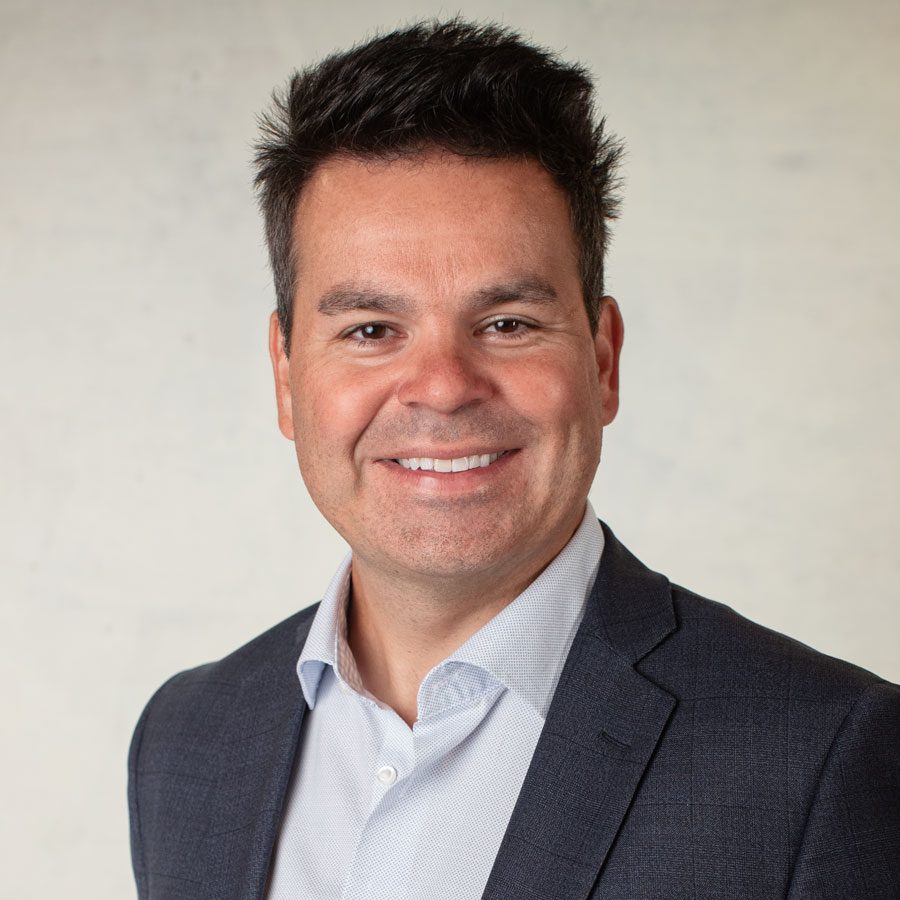
Roman Salasznyk sees tremendous potential for technology and artificial intelligence to drive improvements in health care.
“The life sciences field is entering a period of tremendous change, marked by innovation and transformation,” he said.
Researchers, health care providers, regulators ⏤ all are looking to leverage technological advances in support of improved public health outcomes. As a senior vice president and leader of the life science practice at Booz Allen, Salasznyk is helping them to make that journey.
“We’re developing the methods and techniques, the capabilities and tools, to help support our clients’ missions and deliver the insights that they need to fully capitalize on this new ecosystem,” he said.
A number of technologies are propelling the field forward.
“Artificial intelligence is increasingly being integrated across life science disciplines, especially in the context of big data,” Salasznyk said. “We’re seeing a lot of investment made by public health agencies in low code/no code platforms, as well as high-performance computing to rapidly process, analyze and report on information . . . from scientific discovery to product approvals to disease surveillance.”
Through a number of federal contracts, Booz Allen is helping in key areas of concern. Its work supports more effective cancer prevention and survivorship, for example, and the science needed to help government respond effectively to the next pandemic.
“We were recently awarded a contract with the Advanced Research Projects Agency for Health (ARPA-H) . . . to accelerate the discovery and advancement of products for not only unmet medical needs, but for the next public-health emergency, like the pandemic,” Salasznyk said. “We are helping them develop their strategic plans, conducting analysis for promising discoveries and technologies, all with an eye towards commercialization.”
Through its contracts with the National Cancer Institute, Booz Allen seeks to empower the government and the institute’s extramural research committee, to advance cancer knowledge and biomedical innovation. The aim is to improve prevention, detection, diagnosis and survival rates.
“For NCI’s Clinical Trials Reporting Program, we are focused on capturing information across the cancer research ecosystem, to improve clinical trial search prioritization and matching of patients to trials,” Salasznyk said. With lots of promising therapeutics in development, the team is leveraging data analytics to connect the right patients to the right clinical studies.
In other engagements, Booz Allen seeks to support the National Cancer Institute to improve cancer diagnosis and prevention.
“It’s about things like early screening, better detection capabilities,” Salasznyk said.
“One of the contracts we recently won was to improve the collection of medical images and data relays, to facilitate AI research in cancer detection, risk prediction, and clinical decision-making,” he added.
The hope is that by applying data science to imagery, it will be possible to spot precancerous lesions and early-stage cancer faster and more accurately.
Salasznyk said GovCons can help government to drive better health outcomes by bringing the best private-sector innovations into public-sector agencies. GovCon’s role is not just to identify promising technologies, but helping federal agencies put them to best use.
“How do we bring in leading-edge capabilities to support our clients? How do we automate and strengthen their business operations? How do we derive business intelligence and analytics from their data?” Salasznyk asked. “As a contractor, it’s our responsibility to adapt technologies that are currently being used in industry and bring them to bear for our clients.”
As a GovCon in the health care space, Salasznyk said the biggest challenge he faces is the very public nature of the problems his team is trying to solve.
“We’re at the forefront of helping public health agencies to approve medical products and devices. We’re supporting their disease-surveillance operations, we’re helping them beat debilitating diseases. These missions that we support all have very high visibility,” Salasznyk said.
“That means we always have to be on our game . . . government contracting is very challenging. We constantly need to be ready to rapidly pivot to help them face the next public health threat or need,” he added.
The highly visible nature of the work sets a high bar on performance. It takes a strong cadre of talented individuals to meet that bar.
“Our team is what drives our success,” Salasznyk said. “We have a passionate, hardworking and dedicated workforce, and they are really focused on these missions. They don’t look at this as just another job: They look at this as an opportunity to improve the health of the American public.”
Salasznyk noted that working with this talented team is his greatest source of job satisfaction.
The mission itself is highly motivating, of course. From combating cancer to tackling public-health crises, Salasznyk is engaged daily with crucial issues with significant human impacts. Against this backdrop, he said, it’s the team itself that gets him most excited.
“The thing that makes me so passionate about this role is our people,” he said. “We have talented technologists, data and regulatory scientists, and cloud engineers, all working to solve some of the government’s toughest challenges. What really drives me is the people that I work with, this best-in-class, multi-disciplinary team committed to working together to successfully tackle our nation’s most pressing priorities and problems.”

